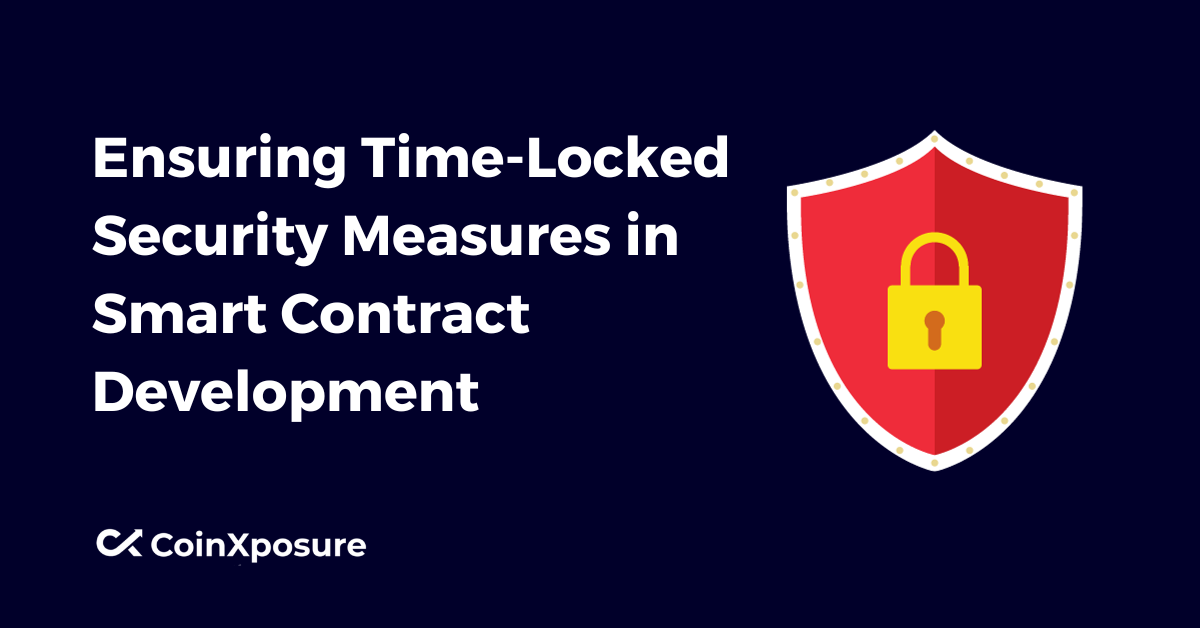
Ensuring Time-Locked Security Measures in Smart Contract Development
In the dynamic landscape of blockchain technology, implementing security measures in smart contracts has become integral to numerous decentralized applications. However, with this innovation comes the critical responsibility of safeguarding assets and ensuring the reliability of these contracts over time.
One pivotal aspect of securing smart contracts involves integrating time-locked security measures. This introduction explores the significance of time-locked functionality, delving into its role in enhancing the robustness of smart contract development.
As we navigate the complexities of decentralized systems, the focus on time-locked security measures emerges as a crucial strategy for mitigating risks and fortifying the foundations of trust within blockchain ecosystems.
Time-Locked Functionality
Time-locked functionality in smart contracts refers to the incorporation of predetermined time-based conditions that govern the execution of specific functions within the contract. This feature adds an element of temporal control, allowing developers to restrict access or trigger certain actions only after a specified period has elapsed.
Time-locked functionality is commonly employed for various purposes, including delayed fund releases, vesting schedules, and upgrade mechanisms.
By introducing time constraints, developers can enhance smart contracts’ security, transparency, and governance, aligning them with predefined schedules or conditions to meet specific project requirements.
Best Practices for Time-Locked Security
Here are some of the best practices for time-locked security:
- Secure Code Implementation
- Auditing and Testing
- Governance and Administration
- Communication Protocols
Secure Code Implementation
- Adhere to Solidity coding standards.
- Mitigate vulnerabilities such as reentrancy through careful code design.
Auditing and Testing
- Conduct thorough code audits by experienced security experts.
- Implement comprehensive testing strategies, including unit tests and scenario-based testing.
Governance and Administration
- Utilize multisig wallets to distribute control.
- Establish clear administrative controls, including role-based access and emergency shutdown procedures.
Communication Protocols
- Maintain transparent communication with stakeholders about time-locked features.
- Develop clear reporting and incident response plans for any unforeseen issues.
These best practices collectively contribute to a robust time-locked security framework, fostering trust and resilience in smart contract development.
Governance and Administration in Smart Contract Development
Here are the roles of governance and administration in shaping the smart Contracts development:
- Multisig Wallets:
- Implement multisignature wallets to require multiple cryptographic signatures for authorization.
- Distribute control among key stakeholders, reducing the risk of single points of failure.
- Administrative Controls:
- Establish role-based access controls to limit permissions based on responsibilities.
- Develop clear procedures for administrative actions and ensure they align with the project’s governance model.
- Emergency Shutdown Procedures:
- Define explicit procedures for emergency shutdowns in case of critical vulnerabilities or unforeseen circumstances.
- Ensure these procedures are well-documented and accessible to authorized personnel.
- Transparency and Accountability:
- Foster transparency in governance decisions to maintain trust among stakeholders.
- Implement mechanisms for tracking and attributing administrative actions, promoting accountability.
- Quorum Requirements:
- Set quorum requirements for governance decisions to prevent unilateral decision-making.
- Define the minimum number of participants or stake percentage needed to execute administrative actions.
Governance and administration practices play a pivotal role in shaping the security and stability of smart contracts, ensuring that decision-making processes are robust, accountable, and aligned with the project’s objectives.
Communication Protocols Smart Contracts Development
Here are communication protocols in smart contract development:
- Stakeholder Communication:
- Establish clear channels for communication with all relevant stakeholders.
- Regularly update stakeholders on project progress, including any changes to time-locked features.
- Documentation:
- Maintain comprehensive documentation regarding time-locked functionality.
- Provide accessible and understandable documentation for both technical and non-technical stakeholders.
- Incident Response Plans:
- Develop detailed incident response plans to address potential issues related to time-locked security.
- Communicate steps to be taken in emergencies, ensuring a swift and coordinated response.
- Regular Reporting:
- Implement regular reporting mechanisms to keep stakeholders informed about the status of time-locked contracts.
- Include key metrics, security updates, and any relevant changes in the reporting process.
- Community Engagement:
- Foster open communication with the community through forums, social media, or other relevant platforms.
- Encourage feedback and address concerns promptly to maintain a transparent relationship with users.
- Educational Initiatives:
- Provide educational resources to help stakeholders understand the importance of time-locked security measures.
- Offer guidance on best practices and security protocols to enhance overall awareness.
Effective communication protocols are essential for building trust, ensuring transparency, and keeping stakeholders informed about the status and security of time-locked smart contracts.
Conclusion
The integration of time-locked security measures stands as a cornerstone in smart contract development, providing a robust framework to fortify the trust and resilience of decentralized applications.
By adhering to best practices, including secure code implementation, rigorous auditing, and thoughtful governance, developers can establish a solid foundation for time-locked functionality.
Effective communication protocols, both internally and with external stakeholders, foster a collaborative and informed ecosystem. Regular reporting, incident response plans, and community engagement contribute to a transparent and trustworthy environment, crucial for the sustained success of time-locked smart contracts.
In essence, the comprehensive implementation of these practices not only safeguards the integrity of time-locked smart contracts but also instills confidence in users, stakeholders, and the broader blockchain community.
As the landscape continues to evolve, a commitment to these principles ensures that time-locked security measures remain resilient in the face of challenges, providing a foundation for the continued growth and adoption of decentralized technologies.





